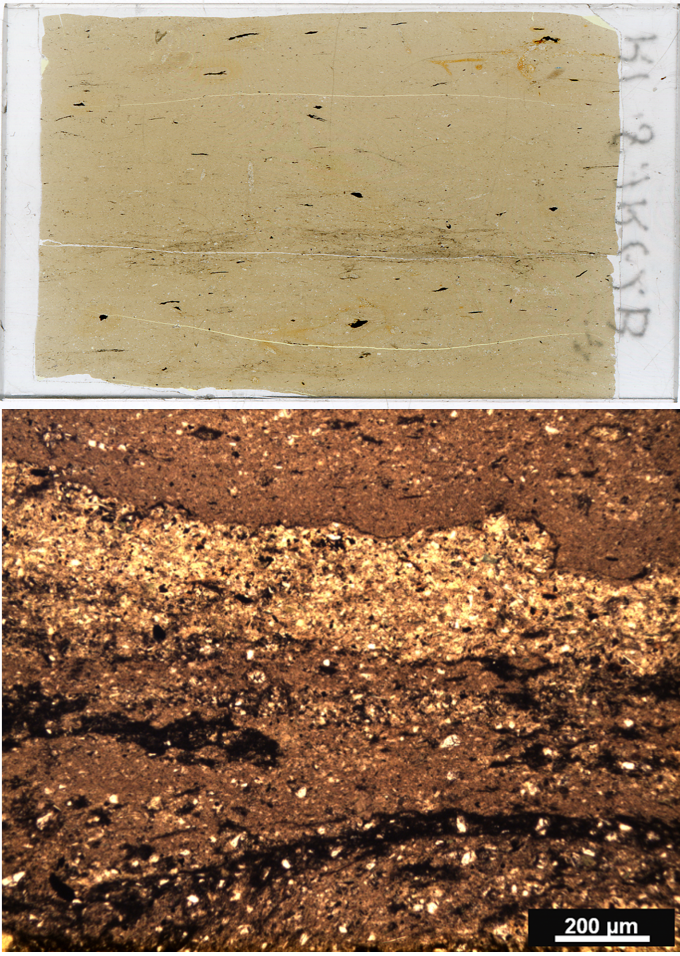Microscopy of thin sections
Thin section petrography is a key tool for the identification of rock types, depositional environments, sedimentological or (micro-)tectonic textures and diagenetic processes. It also allows to discern pore types and their interconnectivity. At Qmineral, thin sections are prepared by vacuum impregnation and water-free polishing to avoid the risk of artifacts. The fluorescent impregnation resin that we use, allows visualization of pores and organic matter.
Polarisation microscopy is used for qualitative description of pores and particles. Image Analysis (IA) allows us to quantify pore or particle properties such as their size and shape distribution. Point counting analysis is a very useful tool to quantify specific features which often can not be assessed from other measurements. Typical examples are types of porosity, phases of cementation, microfossil abundances and intra- or extraclast types.

Figure. (Upper) Thin section of a plastic shale sample with horizontal stratification and abundant framboidal pyrite concretions. (Lower) Polarized microscopic image of the same shale sample showing the presence of a thin quartz lamination in the clay matrix with an erosional top surface.
